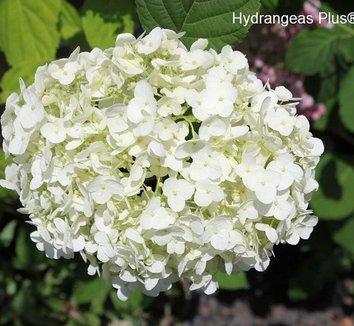Photo by Ecelan
This file is licensed under the Creative Commons Attribution-Share Alike 3.0 license.
Hydrangea anomala ssp. petiolaris
Also Known As
- Hydrangea anamola subsp. Petiolaris
- Hydrangea anomala 'Petiolaris'
- Hydrangea anomala petiolaris
- Hydrangea anomala subsp. petiolaris
- Hydrangea petiolaris
- Climbing Hydrangea
- Climbing Hydrangea
Plant type
shrub, groundcover, vine
size
- H: 20'-50'
- W: 5'-50'
planting zones
- 4a-9b
Hydrangea anomala ssp. petiolaris plant details
Hydrangea anomala ssp. petiolaris is a broadleaf deciduous groundcover shrub or vine with green foliage. In spring and summer white flowers emerge. Attracts bees making it an excellent addition to pollinator gardens. Grows well with mostly sun - shade and even moisture - regular water. Adapts to various soil conditions. Does well in average, rich and well-drained soil. A good option if you're seeking something humidity tolerant.
CHARACTERISTICS OF Hydrangea anomala ssp. petiolaris
- Plant type: groundcover shrub or vine
- Plant family: hydrangeaceae
- Foliage: deciduous green
- Mature size: 5 FT - 50 FT - wide, 20 FT - 50 FT - tall
- Flowers: white blooms in spring and summer
- Uses: border plant, clinging, cottage garden, distinctive bark, fall color, serrated leaves, trellis, winter interest, woodland garden
GROWING CONDITIONS for Hydrangea anomala ssp. petiolaris
- USDA Zones: 4a - 9b
- Sun exposure: mostly sun - shade
- Watering frequency: even moisture - regular
- Resistant to: rabbit, humidity
- Soil needs: average, rich and well-drained
Nursery contributed plant descriptions

By: Forestfarm

By: Garden World

By: Nasketucket Gardens

By: Fantastic Plants

By: Hydrangeas Plus

By: Lazy S'S Farm Nursery
Garden photo gallery of Hydrangea anomala ssp. petiolaris

By: Ecelan
This file is licensed under the Creative Commons Attribution-Share Alike 3.0 license.
View Original Photo
By: Friends School Plant Sale by Nancy S.
This file is licensed under the Creative Commons Attribution-Share Alike 3.0 license.
View Original PhotoGardening facts about Hydrangea anomala ssp. petiolaris plant
How to Grow Hydrangea anomala ssp. petiolaris
Sun Exposure
- mostly sun - shade
Water Needs
- even moisture - regular
Soil Needs
- adaptable
- average
- well-drained
- rich
Special Situation
- humidity tolerant
Features
Foliage Color
- green
Flower Color
- white
Wildlife
- bees
- rabbit resistant
Flower Season
- summer
- spring
Foliage Season
- deciduous
Landscape groups by tags
Mailing List
Sign Up for updates on new plant arrivals and deals© 2010—2025 Plant Lust, LLC All Rights Reserved

















